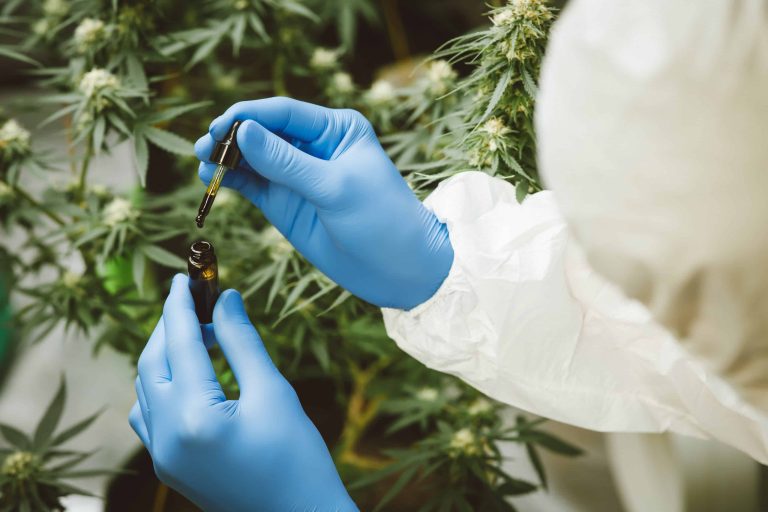The primary THC metabolite that lingers in urine and blood is likely still active and as potent as THC, if not more, new data suggests. The new findings present more questions than answers.
According to data from a study Updated June 10 in The Journal of Pharmacology and Experimental Therapeutics, the cannabis metabolite 11-hydroxy-THC (11-OH-THC) has psychoactive properties that are equal to or greater than those of THC (delta-9 THC).
The study, “The intoxication equivalency of 11-hydroxy-delta-9-tetrahydrocannabinol (11-OH-THC) relative to delta-9-tetrahydrocannabinol,” demonstrates how THC metabolites remain active. THC breaks down as it’s decarboxylated and processed in the body, creating new and interesting compounds.
“In this study we establish that the primary metabolite of THC—11-OH-THC—displays equal or greater activity than THC in a mouse model of cannabinoid activity when directly administered and even when accounting for route of administration, sex, pharmacokinetic, and pharmacodynamic differences,” the study reads. “These data provide critical insight into the bioactivity of THC metabolites that will inform the interpretation of future cannabinoid research and represent a model for how THC consumption and metabolism may affect cannabis use in humans.”
The study was completed by Canadian researchers in Saskatchewan, including Ayat Zagzoog, Kenzie Halter, Alayna M Jones, Nicole Bannatyne, Joshua Cline, Alexis Wilcox, Anna-Maria Smolyakova, and Robert B Laprairie. Researchers observed male rats and injected them with 11-hydroxy-THC. They observed the effects of the THC metabolite versus its parent compound delta-9 THC.
Researchers continued, writing “these data suggest that 11-OH-THC was 153% as active as THC in the tail-flick test of nociception, and 78% as active as THC for catalepsy. Therefore, 11-OH-THC displayed equal or greater activity than the parent compound THC, even when accounting for PK differences. Thus, the THC metabolite 11-OH-THC likely plays a critical role in the bioactivity of cannabis; understanding its activity when administered directly will aid in the interpretation of future animal and human studies.”
NORML reports that 11-hydroxy-THC is one of two primary metabolites formed following cannabis consumption, along with 11-nor-9-carboxy-THC, which is not psychoactive and may linger in the bloodstream or urine for long periods of time.
According to the Centers for Disease Control and Prevention (CDC), dating back to the 1980s, urine tests are primarily based on detection of 11-nor-delta-9-tetrahydrocannabinol-9-carboxylic acid (9-carboxy-THC), a metabolite of delta-9-THC, which is the primary active component of pot.
Greater quantities of 11-hydroxy-THC are produced when edibles are eaten than by smoking cannabis flower, even though smoking cannabis kicks in faster than edibles. NORML reports that this is actually one the reasons why cannabis-infused edibles can become more psychoactive and create chaos for the unprepared.
Evidence shows how cannabis can impact you differently, depending on the delivery route. A 2021 study Updated in The Permanent Journal shows how and why edibles can hit harder than smoking, due to the way 11-OH-THC is metabolized.
“The bioavailability of inhaled THC is 10% to 35%,” researchers wrote. “After THC is absorbed, it travels to the liver where most of it is eliminated or metabolized to 11-OH-THC or 11-COOH-THC. The remaining THC and its metabolites enter the circulation. The bioavailability of ingested THC is only 4% to 12%. THC is highly lipid soluble and is therefore rapidly taken up by fat tissue. The plasma half-life of THC is 1 to 3 days in occasional users and 5 to 13 days in chronic users.”
Studies have shown THC metabolites like 11-OH-THC can linger in blood and urine long after the psychoactive effects of cannabis have worn off. This throws a wrench into the normal ways of testing drivers and athletes for impairment.
Researchers in Australia, for instance, have been determining the window that cannabis can impair driving performance. In one case, Thomas R. Arkell, Danielle McCartney, Iain S. McGregor, who are associated with The Lambert Initiative at the University of Sydney, studied the impact of cannabis on driving ability.
They determined that cannabis can impair driving ability in the hours immediately after smoking, but the impairment ends well before THC metabolites are flushed from the bloodstream, which linger for weeks or months after consuming cannabis.
“Patients using THC-containing products should avoid driving and other safety-sensitive tasks (e.g. operating machinery), particularly during initiation of treatment and in the hours immediately following each dose,” the authors wrote. “Patients may test positive for THC even if they do not feel impaired, and medical cannabis use does not currently exempt patients from mobile (roadside) drug testing and associated legal sanctions.”
The new findings about 11-OH-THC suggest more is to be learned about how THC metabolites affect us. More research is needed to understand the compounds more clearly.
